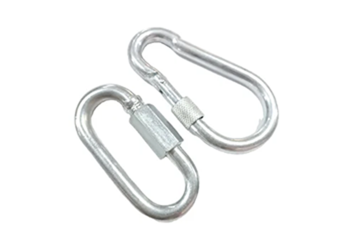8월 . 15, 2024 05:05 Back to list
Exploring Various Mechanical Bolt Types and Their Applications in Engineering and Construction Projects
Understanding Mechanical Types of Bolts A Comprehensive Overview
Bolts are integral components in mechanical engineering and construction, serving as fasteners that hold various structures together. Their effectiveness largely depends on their design, material, and the stresses they were intended to withstand. Here we explore the different mechanical types of bolts, their applications, and key considerations for selection.
1. Hex Bolts
Hex bolts, also known as hex head bolts, are characterized by their hexagonal heads. They are typically used in conjunction with a nut and washer and are designed to be tightened by a wrench. Hex bolts are versatile and are often used in structural applications where high strength is required. They can be made from various materials, including carbon steel, stainless steel, and alloy steel, allowing them to be used in different environmental conditions, from marine applications to heavy machinery.
2. Socket Head Cap Screws
Socket head cap screws feature a cylindrical head with an internal hexagon, allowing them to be driven by a socket wrench. Their design provides greater torque capacity and makes them suitable for applications with limited space where conventional wrenches cannot fit. These screws are often used in machine assembly and automotive applications due to their durability and strong clamping force.
3. Carriage Bolts
Carriage bolts are designed with a round head and a square section underneath, which helps to prevent the bolt from turning once it has been installed through a material. Their design makes them ideal for securing wood and is frequently used in outdoor applications, such as furniture assembly and fencing. However, they should not be used in high-stress applications due to their lower tensile strength compared to other bolt types.
4. Lag Bolts
mechanical types of bolts

Also known as lag screws, lag bolts possess a large, square head and are intended for use in heavy timber or masonry. Their coarse threads enable them to create a strong grip, making them perfect for structural joints or attaching hardware to wood. Due to their substantial size and strength, lag bolts are commonly used in construction and heavy-duty applications, such as building frames and supporting structures.
5. Anchor Bolts
Anchor bolts are crucial for securing structures to concrete foundations. These bolts are embedded in concrete and provide a stronghold for the structural components like beams and columns. They come in various shapes and sizes depending on the type of load they will bear and are essential in construction applications where stability is key.
6. Eye Bolts
Eye bolts are designed with a looped head, allowing for the attachment of a hook or rope. They are often used in lifting applications, such as hoisting or rigging. Eye bolts come in various grades, such as regular and forged, to cater to different load capacities and applications. It is important to select the right grade based on the intended load to ensure safety.
Selecting the Right Bolt
When choosing a bolt type, one must consider factors such as the load requirements, environmental conditions, and compatibility with other components. The bolt material is also critical, as certain materials may offer better resistance to corrosion, heat, or fatigue.
In conclusion, understanding the mechanical types of bolts is essential for engineers, builders, and DIY enthusiasts alike. The correct selection of bolt types can significantly influence the strength, durability, and safety of the structures they help to secure. By considering the specific requirements of each application, one can ensure optimal performance and longevity in any mechanical assembly.


